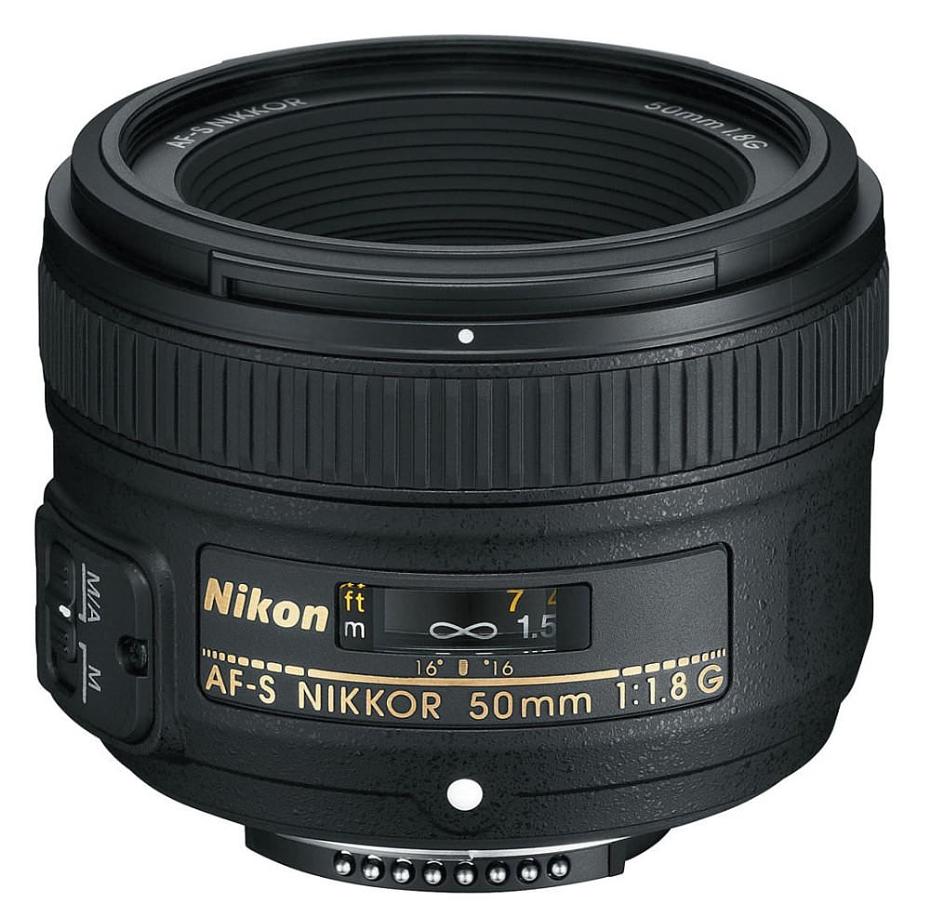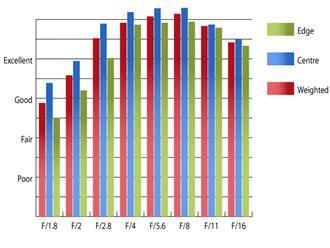Handling and Features
Performance
Verdict
Specification

This update to Nikon's venerable 50mm f/1.8G has a lot to live up to, as the reputation of the older D version that it is amongst Nikon's sharpest optics will be a hard task to live up to. This new version currently costs around £200, which is around £100 more than the cheapest price the older D version can be picked up for currently.
The new design sports a silent wave focusing motor, which will allow it to autofocus on Nikon's entry level bodies such as the D3100 and D5100 and older bodies which lack a built in focusing motor such as the Nikon D40 or D60. Although this lens is designed for full frame cameras, it has great appeal for DX camera users, as the angle of view on the smaller sensor is equivalent to a 75mm lens on the larger FX format, which is perfect for portraiture. It's rounded diaphragm blades should also help to provide smooth out of focus areas.
In this review we'll take a close look at how this lens performs to see if it is a worthy successor to its predecessor.
Nikon AF-S Nikkor 50mm f/1.8G Handling and Features
Weighing only 185g, this lens is incredibly lightweight and shouldn't be too much of a burden to stow in a kit bag until needed as a result. Despite the light weight, the build quality hasn't suffered. The lens mount is constructed from metal, which has a rubber gasket to keep dust and moisturise from getting into the camera, although the rest of the lens makes no promises about weather sealing. The rest of the lens body is made from high quality plastics with a matt textured finish. Due to the light weight and compact size, it balances well on the Nikon D700 used for testing, making a compact, travel-friendly combination.
Although the lens doesn't employ an internal focus design, it does not extend during focusing, with all movement back and forth kept inside the lens barrel. This design also means the front filter thread does not rotate, which makes this optic perfect for use with graduated and polarising filters via the 52mm filter ring.
Focus speeds are reasonably fast and manual adjustments can be made at any time, thanks to the silent wave focusing motor. The narrow manual focusing ring is well damped, making it a pleasure to use when focusing manually. A focus distance window with hyperfocal markings for f/16 is provided. Although these markings are a welcome addition for hyperfocal shooting, they are very close to the focused distance marking, making them difficult to use effectively.
Nikon AF-S Nikkor 50mm f/1.8G Performance
Even when shooting wide open at f/1.8, the clarity in the central portion of the frame is very good, although the quality towards the edges of the frame is fairly good.
As with most lenses, stopping down the aperture increases this optics performance across the frame and by f/2 the lens produces images with good sharpness from edge to edge with near excellent clarity in the centre. Peak performance is achieved between f/5.6 and f/8, where this lens' performance is truly outstanding across the frame.
Resolution at 50mm |
How to read our charts |
 |
The blue column represents readings from the centre of the picture frame at the various apertures and the green is from the edges. Averaging them out gives the red weighted column. The scale on the left side is an indication of actual image resolution. The taller the column, the better the lens performance. Simple. For this review, the lens was tested on a Nikon D700 using Imatest. |
The simple optical design requires no exotic ED glass to keep chromatic aberrations under control. At its worst, fringing chromatic fringing covers and area that just exceeds 0.5 pixel widths, which should pose few issues, even in very large prints or harsh crops from the edge of the frame.
Chromatic Aberrations at 50mm |
How to read our charts |
 |
Chromatic aberration is the lens' inability to focus on the sensor or film all colours of visible light at the same point. Severe chromatic aberration gives a noticeable fringing or a halo effect around sharp edges within the picture. It can be cured in software. Apochromatic lenses have special lens elements (aspheric, extra-low dispersion etc) to minimize the problem, hence they usually cost more. For this review, the lens was tested on a Nikon D700 using Imatest. |
Falloff of illumination towards the corners is quite pronounced on FX format cameras at f/1.8. Here the corners of the frame are 2.5 stops darker than the image centre, which can be a blessing, or a curse depending on your preference. Stopping the lens down results in more even illumination across the frame and visually uniform illumination is achieved at f/4.
For a prime lens like this, barrel distortion is quite pronounced, which may pose problems for critical applications such as copy stand work. Imatest detected 1.98 barrel distortion and the pattern of distortion is uniform across the frame, which should make it relatively easy to correct in image editing software afterwards.
The deeply recessed front element is already well protected from extraneous light that may cause flare or loss of contrast and a deep circular hood is also provided to provide further protection. When shooting into the light, the simple optical design ensures this lens maintain good contrast and is resistant to flare in all but the most extreme of conditions.
 |
 |
| Out of focus areas are rendered smoothly thanks to the rounded aperture blades - ISO500, 1/6400, f/4, 50mm | The compact size and light weight makes this lens an ideal travel companion - ISO200, 1/1250, f/4, 50mm |
 |
 |
| Sharpness is outstanding from edge to edge when stopped down - ISO200, 1/250, f/11, 50mm | The simple optical design is very resistant to flare - ISO450, 1/250, f/8, 50mm |
 |
 |
| ISO200, 1/400, f/8, 50mm | ISO200, 1/640, f/1.8, 50mm |
Nikon AF-S Nikkor 50mm f/1.8G Verdict
Considering the reputation of this lens' predecessor, it has a lot to live up to. The new more refined design is indeed very welcome, especially for those looking for a portrait lens for their entry-level DX format camera, who would have had to resort to manual focus if using the older D version.
Although this new lens is more expensive than many 50mm f/1.8 lenses, the build quality is excellent and it handles very well. Optically, it is also superb, offering outstanding quality at a reasonable, although not bargain basement price.
The new Nikon 50mm f/1.8 lens is optically superb offering outstanding quality.





